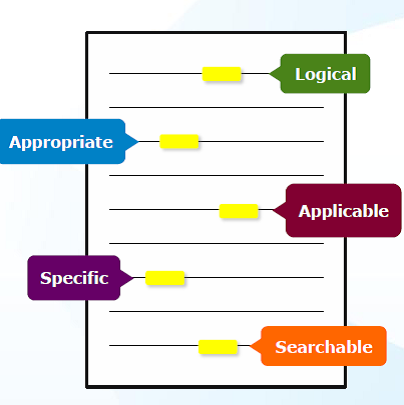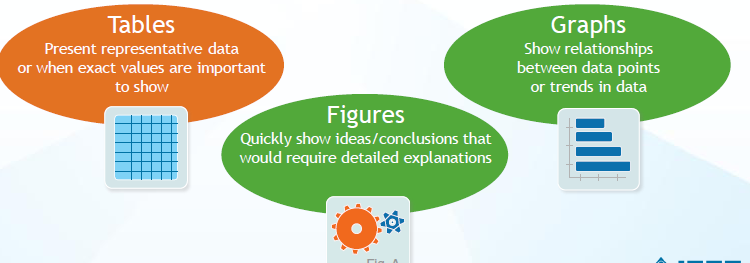Electrical and Electronics Engineering Assignment Help
Abstract
This article is a guide for electrical engineering students to help them make the task of writing as an easy one. It also guides the students to get prepared for their project reports. It not only assists students to present their writing in high-quality but also enables them to write technical reports in their places of work after they complete their graduation. Not only it helps electrical engineering students, but also other undergraduate students will benefit from this work (Surname 2020).
Introduction
This article provides the basic guidelines that students should know to prepare for writing and presenting a high-quality assignment. It also provides many relevant illustrations with a simplistic approach to make the students understand the writing structure and enable them to present the assignment in a creative way and also makes it an important tool for engineering students. This paper also assists the students to write the assignments in a more structured format and helps them to follow the IEEE guidelines to make their work a perfect one (Ashby 2011).
Order of the assignment
1. The title: The title of the assignment should be short and crispy and at the same time, it should also reflect the main concept of the topic.
2. Abstract: An abstract should be the condensed version of the assignment. This part should not exceed more than 250 words. The abstract should be in the past form. Keywords and index terms must be used in this section to make it more searchable.
3. Keywords: It should be used in the Title and abstract for improved Search Engine Optimization.

4. Summary: This part should take half to a full page to explain the contents of the topic briefly. The problem statement, methods for a solution, results and conclusions are discussed in this part. The reader should be able to get a clear idea of the essentials of the assignment report. Abbreviations and references should not be included in the summary (Lukács 1884).
5. Contents: Content should include chapter titles, short sections, and subsections that help the readers to retrieve a specific part where they are interested. LATEX or WORD can be used to generate the contents automatically, thus eliminating errors in the contents.
6. Equations: Equations are also numbered continuously. The equation number is placed between parentheses. Word processor can be used to generate the equation numbering automatically. All variables that are used in the equation must be defined in the text (Fellow 2017).
The following mathematical symbols are used in formulas and equations:
≈ means approximately equal to;
α means proportional to;
≠ means unequal;
Some of the below-mentioned terms are also used in the equation:
- Functions such as “sin”, “log”, etc;
- “d” for differential symbol;
- Units such as “V” for volt, and “A” for ampere, etc.;
- Text in an equation, e.g. x = 1, for y >2”;
- Subscripts e.g. x2, Vout, ηeff, etc;
- Symbols for chemicals equations, e.g. LiNbO3;
- Parentheses, braces, brackets, and operators as ([{+ ∗ -}]);
- Vectors are types in lower case and bold;
- Matrices should be in upper case bold.
- List of Abbreviations and symbols:
The symbols and abbreviations that are used in the report must be defined here as a list in alphabetical order, where lower case symbols should be listed first, and the upper case symbols must be listed next, and finally, the Greek symbols must be listed. So, the order should be like: a, A, b, B, c, C, . . . z, Z. Abbreviations should be presented in a separate list and the same order must be used. The abbreviation must be placed in between the parenthesis after writing the full text, e.g. “Internet of Things (IoT)”
8. Introduction:

This section should define the problem statement or the goal of the assignment. It should present a short overview of the work that has been done already.
9. Body of the Report: The body part must reflect the achievements of the report. This part should not be too lengthy. Approximately it should be within 50 pages. This section is further divided into chapters that describe an essential part of the assignment.
10. Conclusions and recommendations: The results of the assignment should be summarized in one or two pages. The conclusion should be drawn from the result and consequences should be indicated further. Recommendations for future research should be stated in this part.
11. References: The list of references like books, papers that referred for writing the assignments must be listed in this section.
12. Appendices: The appendices must include all derivations, schemes, details, listings, etc.
Guidelines for writing assignments:
The following formatting guidelines must be followed for writing an assignment:
- Margins: margins should be 2.5 cm on all sides.
- Font: The font must be 12-point and the font style should be Times New Roman.
- Line Spacing: Text must be 1.5 lines spacing.
- Line Justification: The contents of the assignment must use full justification.
- Headings: All major headings in the assignment must have a size of 14-point and bold. All subheadings must have a size of 12-point, bold and italic
- Page Numbers: All pages must be numbered in a consecutive way and must be in the center. Page numbers must be within the footer at the bottom of each page.

- Tables, Figures, Graphs and Drawings: All tables, graphs, figures must be numbered consecutively using Arabic numerals like 1, 2, 3, etc. A title must appear after the number and the label should appear under the figure, table, and graph (Akorede 2009).
Conclusion:
A high-quality assignment report must reflect a central idea. The material must be presented in a logical and structured manner. It must be crisp and short. There should not be any grammatical errors in the report. Before submitting the main report, a draft must be prepared and presented to someone with good knowledge of English to proofread the content. The content can be edited if there are any corrections. This will relieve the burden of the project supervisors of correcting the report, which is not their primary responsibility.
References
- Akorede, M. 2009. “Guidelines for Writing an Undergraduate Engineering Project.” IEEE Potentials 28(6): 10–15. https://mars.uta.edu/mae3183/manuals/ieee_ug_report_writing.pdf.
- Ashby, D. 2011. Electrical Engineering 101: Everything You Should Have Learned in School…but Probably Didn’t. Elsevier Science. BOOK. https://books.google.co.in/books?hl=en&lr=&id=as7I_iLKJPEC&oi=fnd&pg=PP1&dq=1.%09Design+Project+Report+Writing+Rules,+EE+101+%E2%80%93+Introduction+to+Electrical+and+Electronics+Engineering,+Faculty+of+Engineering,+Electrical+and+Electronics+Engineering+Department&ots=F9cIYtY4M-&sig=91DVjtoetR6rIJ_UAGJc4KDfkIY.
- Fellow. 2017. “Preparation of Papers for IEEE TRANSACTIONS and JOURNALS.” http://ieeeauthorcenter.ieee.org/wp-content/uploads/Transactions-instructions-only.pdf.
- Lukács, Eszter. 1884. How to Write a Basic Technical Paper for the IEEE? https://www.e-nformation.ro/wp-content/uploads/2015/11/IEEE-How-to-write-a-basic-technical-paper_.pdf.
- Surname, A B C. 2020. “Guide for Writing Assignment Reports.” JOUR. https://www.utwente.nl/en/eemcs/pe/education/layout of research reports and presentations/handl_versl_eng.pdf.

 Previous Post
Previous Post Next Post
Next Post